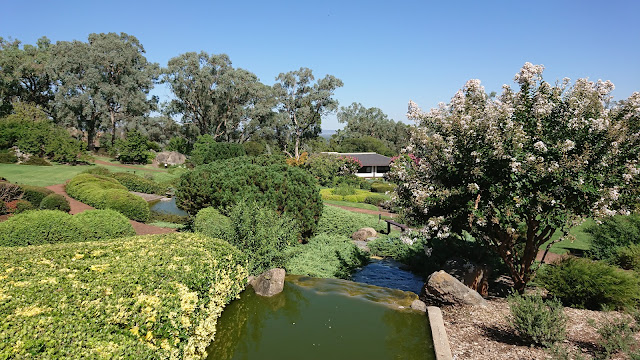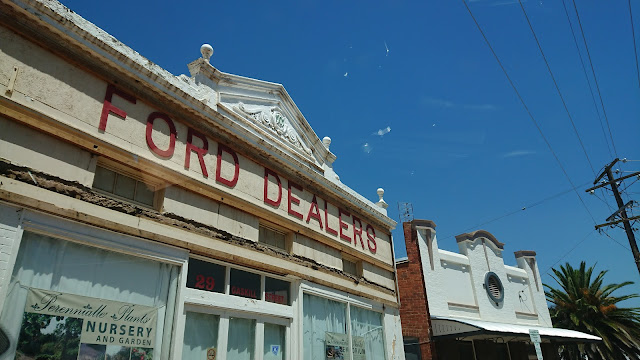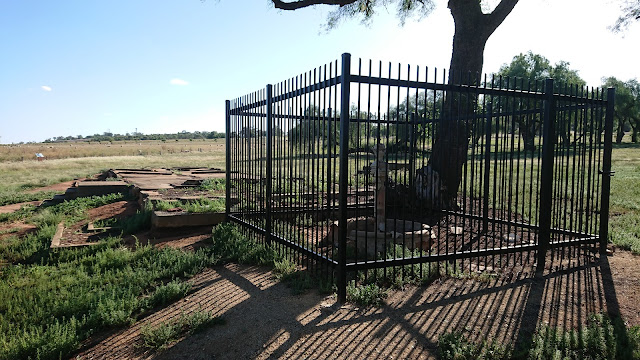The most compelling reasons to visit Cowra stem from those who were compelled by force to stay here. In 1941, during World War Two, the Cowra Prisoners of War camp was established, eventually holding prisoners from Italy, Taiwan, Korea, Indonesia and Japan.
The circular camp was divided into four quadrants, each holding a different group. In one, around a thousand Japanese. Another held Indonesians at the bequest of the Dutch, not prisoners of war, but agitators for freedom. Italians, captured in North Africa, were often skilled in trades and given much freedom. The Korean and Formosan "allies" of Japan took up the final section.
On August 5, 1944, Japanese prisoners staged a breakout from the camp. 231 Japanese died and 4 Australians as a result of the breakout.
The Japanese considered surrender and capture by the enemy as dishonourable and it is believed that the escape attempt was an attempt to regain honour and die in the action of performing it or by their own hand afterwards.
Since the end of the war Australia and Japan have reconciled their differences and formed strong bonds down to the local level. As a student I have learned Japanese and we have hosted visiting students from Japan as well. Until last year and the Coronavirus pandemic we had visited Japan every year since 2005.
Cowra has formed strong links with Japan and, in the absence of being able to visit the actual country, wre the reason to add it as a destination for this journey.
Before the day heats up too much we drive up the road to the Cowra Japanese Garden. At five hectares, it is the largest Japanese garden in the southern hemisphere and was designed by Ken Nakajima. It combines both Japanese and Australian elements into a traditional Japanese strolling garden.
There is a cultural centre to the left as you enter, with traditional Japanese artworks, ceramics and other objects on display. The sight of them makes me long for Japan, as does the Edo cottage with its tatami straw scent and furo bath.
The garden is beautiful, with a stream cascading down the hill, splitting around a tea house fronted by a small pond, before rejoining and flowing down into a larger pond below, large koi and ducks waiting to be fed. Granite boulders dot the landscape, carefully placed but with a sense of nature. There are many vantage points, each giving its own view.
I walk most of the many paths around the garden, frequently pausing to take in the scene. The strong breeze offers relief from the morning heat while cicadas chatter loudly.
Despite the beauty, I can never quite feel I am in Japan. The towering gum trees, the fierce dry heat, the golden landscape beyond the boundary. This is something more than just a Japanese garden.
We stop at the garden's cafe for a late breakfast. I am terribly disappointed to find nothing Japanese on the menu. Not even Japanese tea or soft drinks. It reminds me that we really are not in Japan and the ache to return grows stronger.
As we leave the gardens Alex demands that we restrict ourselves to the indoors. We drive down to the tourist information centre where they have a "hologram" show and display about the POW breakout. It's quite good at putting the events in context before we explore further.
Yesterday we passed through Canowindra to get to Cowra. I want to return to visit the Age of Fishes museum.
We arrive via Canowindra's historic main street and pull up at the museum next to the currently disused railway line.
Roadworks near Canowindra in the 1950's uncovered a slab containing an amazing number of fish fossils from the Devonian period, also known as the Age of Fishes as the dominant vertebrate lifeforms.
Future excavations found further imprints of both placoderm (extinct, armour plated fish) and sarcopterygian (the group modern fish, amphibians and ultimately us are derived from) fish species, including some never seen before.
If you love fossils, then the stone slabs and their casts are things to marvel at. There are also animations of what the region looked like and how it changed over the ages and lots of explanations of the ancient world.
The gift shop is pretty good too for science and fossil related kits and objects.
Overall, a highly informative museum.
That was all I had definitely planned for this trip. We drive back to Cowra and pull into the Lachlan Valley Railway Heritage Centre. It appears pretty deserted and run-down, but before I can explore I need to find a (thankfully clean) bathroom. I've got the runs.
When I emerge the other two are already bored, but I have a nice chat with an attendant. He tells me they are hard at work and confident that they'll get at least part of the line reopened, and that they really need the whole thing open as an alternative route for freight.
I take a walk through a set of wooden heritage sleeping carriages and can imagine myself back in the old days. Slow, not that comfortable perhaps, but a real journey.
After all that we return to the hotel. I take a walk down alone to the main street to find some cold drink and groceries. The range at the NSW bakeries disappoints, especially when compared to the Victorian country bakeries we often stop at.
There is a Coles and a Target, which I poke my head into to explore the range. While us city folk are spoilt for choices at giant shopping malls and specialist stores, in the country department stores still play a role of offering a range of goods that otherwise might not be easily available.
On my return I have a nap. The others just want to rest, but I feel the need to see the rest of the site's connected with the POW story.
I drive by myself out to the POW camp. A recreation of a guard tower stands watch over the mostly empty field. There are tracks around the perimeter of the camp and the odd ruined foundation. There are also information plates located at points along the tracks.
I take the time to walk the gravel paths, keeping an eye out for snakes, and reading about the lives and events of the prisoners and their guards. A restorative breeze rustles the dry grass, while those might be storm clouds near the northeastern horizon.
The peace belies the actions and activities at the camp and I contemplate the stupidity and futility of war as I walk around.
Two crumbling fountains remain in the Italian quarter, a testament to their skill. But I am being called back to the hotel, my silence disturbed.
Before I return, I stop by the War Cemetery. One section for the Australians, another for the Japanese. This is the official burial site for Japanese soldiers interred in Australia, the Japanese government impressed with how the Australian servicemen cared for the Japanese dead.
Back at the hotel the others are hungry. We drive down to the main street to look for cheaper food than yesterday's pub meal. The choices are basically Australian Chinese, Chinese cooking Australian, sushi and pan-Asian, Thais cooking Thai and fried western take-away or Indian. Then there is the usual fast food.
The scent of so much frying makes us feel sick, so we go to McDonalds. Very sad.
We drive back to the POW camp site, so B and Alex can see. Cars of youths have congregated in the car park, so we don't disturb them and just return to the hotel.
Tonight I step outside, and despite the town lights, see a sky clearer than the city. I point out the constellations and planets to Alex, try to explain how to use the Southern Cross and the Pointers to find the south and we spot a meteor.
Our petty wars, the wriggling of fish in a muddy billabong four hundred million years ago, it all seems so insignificant beneath the billions of stars in the universe. But does anyone look up like we do?






































Comments